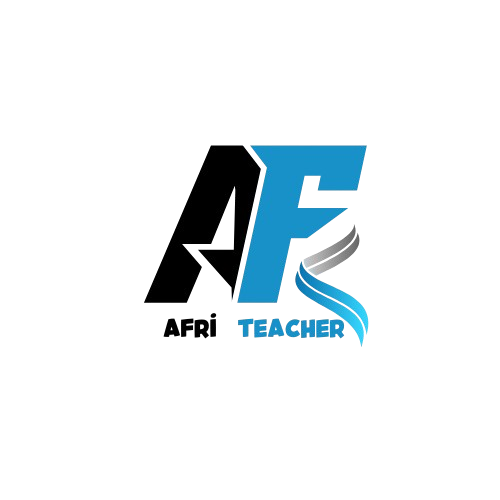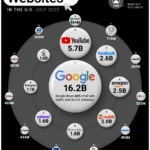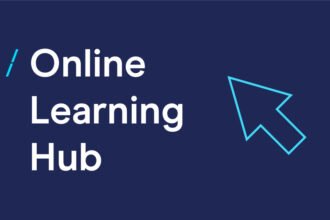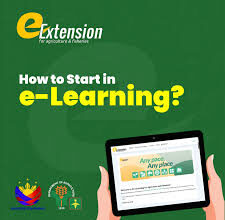The hallowed halls of American universities, once synonymous with gothic architecture, sprawling quads, and bustling lecture halls, are experiencing a profound transformation. What began as a nascent idea, a digital whisper on the fringes of traditional academia, has blossomed into a dominant force: online distance learning. This isn’t just a fleeting trend; it’s a fundamental reimagining of how higher education is accessed, delivered, and perceived in the United States, irrevocably altering the landscape of undergraduate and graduate studies for millions.
Introduction: A Paradigm Shift in American Higher Education
For centuries, university education followed a largely predictable model: students physically attending classes, engaging with faculty face-to-face, and immersing themselves in campus life. While this model fostered a unique intellectual and social environment, it also created significant barriers – geographic, economic, and logistical – for countless aspiring learners. Enter online distance learning, a disruptive innovation that, particularly in the last two decades, has systematically dismantled these barriers, forging new pathways to knowledge and credentials.
This evolution extends far beyond simply putting lectures on video. It encompasses sophisticated online learning platforms, interactive digital tools, personalized learning pathways, and a reimagined pedagogical approach that prioritizes flexibility and accessibility without compromising academic rigor. From Ivy League institutions to regional state universities, the embrace of online modalities is not merely a convenience but a strategic imperative, shaping the future of education in an increasingly interconnected and rapidly changing world. The implications are vast, impacting everything from student demographics and faculty roles to curriculum design and the very definition of a “university experience.”
The Historical Arc of Distance Learning: From Correspondence to Cloud
To fully grasp the current revolution, it’s essential to understand the long, often understated, history of distance education. Its roots stretch back to the 19th century with correspondence courses, where printed materials were mailed to students who completed assignments and sent them back for grading. This early model, though rudimentary, laid the groundwork for remote instruction, democratizing access to education for those unable to attend physical institutions.
The advent of radio and television in the 20th century offered new avenues for delivering educational content, expanding the reach of instruction beyond the mail system. However, these early forms often lacked interactive elements and personalized feedback, remaining largely one-way communication channels.
The true inflection point arrived with the internet. Initially, universities experimented with simple online courses, often digitizing existing materials. The late 1990s and early 2000s saw the emergence of dedicated online learning platforms, though often clunky and limited. The real acceleration began in the 2010s with the proliferation of high-speed internet, sophisticated learning management systems (LMS) like Canvas and Blackboard, and the rise of Massive Open Online Courses (MOOCs) from entities like Coursera and edX. These platforms not only delivered content but facilitated interaction, assessments, and even peer-to-peer learning. Suddenly, free online courses and advanced university lectures were accessible to anyone with an internet connection, anywhere in the world. This period marked a critical shift from mere “distance delivery” to genuine “online learning,” emphasizing interactive engagement over passive reception.
Unpacking the Drivers of Online Learning’s Ascent
Several powerful forces have converged to propel online distance learning to its current prominence, transforming it from a niche offering to a cornerstone of modern university education.
Technological Advancements & Accessibility
The relentless march of technology has been the primary enabler. The widespread availability of broadband internet, coupled with the ubiquity of smartphones, tablets, and laptops, has made digital learning accessible to a much broader population. No longer are learners tethered to a physical computer in a lab; they can engage with online learning courses from a café, during a commute, or from the comfort of their home.
The evolution of online learning platforms has been equally critical. Modern platforms are intuitive, feature-rich, and designed for dynamic interaction. They integrate multimedia, discussion forums, virtual whiteboards, and sophisticated assessment tools. Moreover, supporting technologies like cloud computing have ensured scalability and reliability. Tools such as Google Translate, once seen as mere utilities, now aid in breaking down language barriers for international students in online programs, while AI-powered assistants are beginning to offer personalized tutoring and feedback. The ability to watch lectures, participate in discussions, and submit assignments from virtually anywhere has fundamentally altered the educational experience.
Shifting Student Demographics & Lifestyles
The traditional image of a college student – an 18-to-22-year-old living on campus – no longer reflects the full reality of American higher education. Today’s student body is far more diverse, comprising a significant number of adult learners, working professionals, parents, military personnel, and individuals balancing multiple responsibilities. For these demographic groups, the rigid schedules and geographic constraints of traditional on-campus programs are often insurmountable.
Online distance learning provides the essential flexibility these learners need. It allows them to pursue degrees, gain new skills, or advance their careers without disrupting their existing lives. A working professional looking to pivot careers can undertake CPA online learning or python learning online in the evenings and weekends. A parent can manage childcare responsibilities while pursuing a master’s degree. This demographic shift underscores the demand for accessible, adaptable education, making “my online learning” experience truly personal and manageable. Universities have responded by designing programs specifically tailored to these non-traditional students, recognizing their unique needs and contributions.
Economic Pressures & Affordability
The escalating cost of traditional university education in the USA has become a national concern. Tuition fees, housing, and living expenses can accumulate into substantial debt, making higher education unattainable for many. While online degrees are not always cheaper than their on-campus counterparts, they often offer significant cost savings by eliminating relocation expenses, daily commutes, and sometimes even charging lower tuition rates for online-only programs.
Furthermore, the rise of free online learning platforms and initiatives offering free online courses has made foundational knowledge and even university-level material accessible at no cost. While these often don’t lead to a full degree, they provide invaluable opportunities for skill acquisition, exploration, and preparation, allowing individuals to test the waters of various subjects before committing to a costly program. The promise of an education that is both high-quality and more affordable is a powerful magnet, drawing students towards online options.
The Catalyst: Global Events and Forced Innovation
While online learning had been steadily growing for years, the COVID-19 pandemic served as an unprecedented accelerant. Almost overnight, universities across the USA were forced to transition their entire operations online. This “stress test” demonstrated both the capabilities and the limitations of online delivery at scale. More importantly, it normalized online distance learning for millions of students and faculty who might never have otherwise experienced it.
The pandemic broke down long-standing resistance and skepticism. Faculty gained new skills in digital pedagogy, and students adapted to remote learning environments. While the emergency remote teaching of 2020 was often a rushed improvisation, it paved the way for more thoughtful and intentionally designed online programs post-pandemic, solidifying online learning’s permanent place in the higher education ecosystem. This forced innovation transformed perceptions, making online education learning a mainstream and viable alternative.
The Multifaceted Benefits: For Learners and Institutions
The widespread adoption of online distance learning has yielded a cascade of benefits, revolutionizing how individuals pursue knowledge and how institutions fulfill their educational mission.
Empowering the Learner: Flexibility, Access, and Personalization
For students, the advantages are transformative:
- Unparalleled Flexibility: The ability to learn asynchronously (at one’s own pace) or synchronously (live online sessions) liberates students from rigid schedules. This is a game-changer for those balancing work, family, or other commitments. For instance, an individual living in a rural area can now access specialized programs from top universities in major cities, without the need to relocate.
- Expanded Access: Geographic barriers are virtually eliminated. Students from all 50 states and even international locations can enroll in US-based programs. This has significant implications for diversity and inclusion, bringing a wider array of perspectives into virtual classrooms. Furthermore, individuals with physical disabilities or chronic health conditions find online learning significantly more accessible than navigating a traditional campus.
- Diverse Learning Styles Accommodated: Online platforms often offer content in various formats – video lectures, interactive simulations, readings, audio files – catering to different learning preferences. Students can revisit complex concepts as many times as needed, pause lectures, and engage with materials at their optimal pace. This personalization is a key benefit of online learning.
- Specialized Skill Acquisition: The online format excels in delivering focused, skill-based education. Whether it’s mastering a new programming language like learning python, preparing for professional certifications like CPA online learning, or delving into AI courses online free, students can target specific knowledge gaps and rapidly acquire marketable skills. The rise of micro-credentials and bootcamps delivered entirely online underscores this trend.
- Reduced Commute and Living Costs: For many, pursuing online education learning means staying in their current location, saving on relocation costs, daily commutes, and often, the higher cost of living associated with university towns.
Expanding University Horizons: Reach, Innovation, and Resilience

Universities themselves reap substantial rewards from embracing online distance learning:
- Broader Student Reach: Online programs allow universities to tap into new markets, both domestically and internationally. This expands their potential applicant pool beyond those who can physically attend campus, increasing enrollment and tuition revenue. Many universities now offer online learning programs specifically designed for global audiences.
- Program Diversification and Innovation: The online environment encourages the creation of novel courses and programs that might not be feasible in a traditional setting. Universities can experiment with interdisciplinary studies, specialized certifications, and cutting-edge topics more rapidly. This fosters a culture of innovation in curriculum development.
- Enhanced Institutional Resilience: The pandemic starkly illustrated the importance of having robust online capabilities. Universities with established online infrastructure were better positioned to pivot during crises, ensuring continuity of education. This resilience is now a strategic asset.
- Global Presence and Reputation: Offering high-quality online programs enhances a university’s global standing, attracting diverse faculty and students and fostering international collaborations. Institutions can become global knowledge hubs without requiring physical expansion.
- Efficient Resource Utilization: While developing high-quality online content requires initial investment, the long-term operational costs per student can sometimes be lower than traditional instruction, especially for large enrollment courses. This allows for more efficient allocation of institutional resources.
Navigating the Challenges and Crafting Solutions in the Digital Classroom
Despite its numerous advantages, the transition to widespread online distance learning has not been without its hurdles. Universities, faculty, and students alike have had to adapt, innovate, and find solutions to ensure a high-quality educational experience.
Ensuring Academic Rigor and Quality
One of the persistent challenges has been the perception, often unfair, that online degrees are somehow less rigorous or valuable than traditional ones. This skepticism has historically been a significant disadvantage of online learning.
- Solution: Universities are actively addressing this by ensuring that online curricula meet the same accreditation standards as their on-campus counterparts. They are investing heavily in instructional design, faculty training, and robust assessment methods. Reputable accrediting bodies scrutinize online learning platforms and programs closely, ensuring quality control. Many institutions now explicitly state that an online degree carries the same weight and distinction as a residential one. Publications from organizations like the Council for Higher Education Accreditation (CHEA) often highlight the importance of comparable standards.
Fostering Engagement and Community
A common critique of online learning is the potential for isolation and a lack of community that is often a hallmark of the traditional university experience. Without face-to-face interactions, building rapport and fostering collaborative learning can be more challenging.
- Solution: Innovative online learning platforms and pedagogical approaches are actively combatting isolation. This includes:
- Interactive Tools: Utilizing discussion forums, live video conferencing (Zoom, Microsoft Teams), collaborative documents, and even gamified elements like Kahoot quizzes to promote active participation.
- Group Projects and Peer Learning: Structuring assignments that require teamwork and peer feedback.
- Virtual Social Events: Online clubs, study groups, and informal “coffee chats” to replicate some aspects of campus social life.
- Regular Faculty Interaction: Instructors holding virtual office hours, providing personalized feedback, and actively moderating discussions. LinkedIn Learning also offers community features within its specialized courses.
Bridging the Digital Divide
While internet access is widespread, disparities persist. Not all students have reliable high-speed internet, adequate devices, or quiet study spaces, particularly in socioeconomically disadvantaged or rural areas. This “digital divide” can exacerbate existing inequalities.
- Solution: Universities and government agencies are working to address this through various initiatives:
- Technology Provision: Loaning laptops or hotspots to students in need.
- Community Partnerships: Collaborating with libraries and community centers to provide access points.
- Flexible Assignment Deadlines: Acknowledging that technical issues can arise.
- Offline Access to Materials: Designing courses where some content can be downloaded and accessed without a constant internet connection.
The Evolving Role of Faculty
The shift to online instruction demands a different skill set and mindset from faculty. Traditional lecturing styles don’t always translate effectively to a virtual environment.
- Solution: Universities are investing significantly in faculty professional development programs. These programs focus on:
- Digital Pedagogy: Training instructors in best practices for online course design, engaging online discussions, and utilizing online learning platforms effectively.
- Technology Proficiency: Ensuring faculty are comfortable with various tools and software.
- Role Shift: Encouraging faculty to transition from being sole content deliverers to facilitators of learning, guides, and mentors in an active, student-centered online environment. Resources like O’Reilly Online Learning often provide training specifically for educators in new technologies.
Pioneering Pedagogies: The Future of Online Learning Experiences
The evolution of online learning is not just about technology; it’s profoundly about pedagogy – the art and science of teaching. Universities are exploring and implementing innovative instructional methods that leverage the unique capabilities of the digital realm.
Blended and Hybrid Models: The Best of Both Worlds
One of the most promising pedagogical innovations is the blended learning or hybrid model. This approach strategically combines elements of online and in-person instruction, aiming to harness the strengths of both. For example, lectures might be delivered online asynchronously, freeing up in-person class time for interactive discussions, problem-solving, lab work, or group projects.
This model offers maximum flexibility while preserving the valuable face-to-face interaction that many students and faculty cherish. It’s particularly effective for complex subjects or programs that benefit from hands-on components, offering students the convenience of online learning courses with the deeper engagement of campus-based experiences. Many institutions, like the University of Maryland Global Campus, have refined these models over years.
Personalized Learning Paths & Adaptive Technologies
The future of online education is increasingly moving towards personalization. Imagine an online course that adapts its content, pace, and assessment based on an individual student’s prior knowledge, learning style, and progress. This is the promise of adaptive learning technologies, often powered by machine learning and deep learning algorithms.
These systems can identify areas where a student is struggling and provide additional resources or alternative explanations. They can also accelerate students through material they have already mastered. This approach offers a truly individualized educational experience, optimizing learning outcomes. AI-driven tutors are becoming more sophisticated, providing real-time feedback and support, making online machine learning a critical component of educational innovation.
Gamification and Interactive Learning
To combat potential disengagement in online environments, universities are increasingly incorporating gamification principles. This involves integrating game-like elements – points, badges, leaderboards, challenges, and interactive scenarios – into online learning platforms.
Tools like Kahoot for interactive quizzes, Doodle Learning for foundational skills, and IXL Learning for practice and mastery in subjects like math and English are becoming common. Learning games and online games specifically designed for educational purposes can make complex topics more accessible and enjoyable, boosting motivation and retention, especially for younger learners, but also effectively engaging adults in online learning for kids up to advanced professional development.
Micro-credentials and Stackable Learning
In response to the rapidly changing demands of the job market, there’s a growing emphasis on specific, verifiable skills rather than just broad degrees. Micro-credentials are short, focused certifications or badges that validate mastery of a particular skill or competency. These can range from a certificate in cloud computing to a badge in project management.
The concept of “stackable learning” takes this a step further, allowing students to accumulate micro-credentials over time, which can then be combined to form a larger certificate or even contribute towards a full degree. This modular approach provides flexibility and immediate career relevance. For example, an individual might first complete CPA online learning modules, then pursue advanced data analytics courses, stacking these credentials to enhance their professional profile. This model aligns perfectly with the needs of lifelong learners seeking targeted skill upgrades.
Immersive Technologies: VR/AR in Education
Emerging technologies like Virtual Reality (VR) and Augmented Reality (AR) are poised to create highly immersive and experiential online learning environments. Imagine conducting a virtual dissection in a biology class, exploring ancient ruins in a history course, or practicing complex surgical procedures in a simulated operating room, all from your home.
While still largely in the experimental phase for broad application, these technologies offer the potential to overcome the limitations of traditional online learning by providing hands-on, interactive experiences that were once confined to physical laboratories or field trips.
Transforming Specific Fields: A Closer Look
The impact of online distance learning is not uniform across all disciplines; rather, it has uniquely reshaped various fields, often accelerating innovation and widening access to specialized knowledge.
Business and Finance Education
The world of business and finance is inherently global and fast-paced, making it an ideal candidate for online learning. Universities now offer a plethora of online learning programs in business administration, finance, marketing, and entrepreneurship.
- CPA online learning programs have proliferated, allowing aspiring accountants to prepare for rigorous exams on flexible schedules.
- Online simulations allow students to manage virtual companies, trade stocks, or execute marketing campaigns in real-time, providing practical experience without risk.
- The emphasis on current market trends and global economics means that online delivery can be updated more frequently than traditional textbooks, keeping content relevant.
Computer Science and Technology
The tech sector’s rapid evolution necessitates continuous learning, and online platforms are at the forefront of this.
- Students can learn specific programming languages like Python learning online through interactive courses on platforms like Codecademy or university-led programs.
- AI courses online free or for credit are abundant, covering topics from machine learning fundamentals to deep learning applications.
- Specializations in cybersecurity, data science, and web development are easily accessible, providing pathways to high-demand careers.
- Many tech giants also offer their own certification programs (e.g., Google’s AI certifications), further integrating online learning platforms into career progression.
Healthcare Education
While hands-on clinical training remains crucial, online learning is significantly impacting theoretical and foundational aspects of healthcare education.
- Many nursing, public health, and healthcare administration programs now offer fully online master’s degrees or certificate programs.
- Online simulations are used to teach diagnostic skills and decision-making.
- Continuing medical education (CME) is heavily reliant on online modules, keeping professionals updated on the latest research and practices. Institutions like Baycare Online Learning Center exemplify how healthcare providers use online systems for professional development and compliance. The Red Cross Learning Center also extensively uses online modules for first aid and safety training.
Humanities and Language Learning
Even fields traditionally centered on discussion and cultural immersion have adapted.
- Language learning online has exploded, with platforms offering interactive lessons for learning Spanish online, English, French, and many others. Tools like Duolingo and Rosetta Stone, along with more formal university online courses, make language acquisition more accessible than ever. English learning online is particularly sought after by international students and professionals.
- Humanities courses leverage multimedia, virtual museum tours, and extensive digital archives to bring subjects like history, literature, and philosophy to life.
- Online discussion forums foster rich debates and critical analysis, often reaching deeper levels of engagement than a single, in-person classroom.
The Road Ahead: Lifelong Learning and the Global Campus
The profound changes brought about by online distance learning point towards an even more dynamic future for American university education. The trajectory suggests an educational landscape characterized by continuous engagement, unprecedented global reach, and a redefinition of what it means to be a learner and an institution.
The Imperative for Continuous Skill Development
In a world where industries are constantly disrupted and new technologies emerge at breakneck speed, the concept of a single, terminal degree is increasingly obsolete. Lifelong learning is no longer a luxury but a necessity. Online education is perfectly positioned to serve this need. Universities are evolving to become not just degree-granting institutions, but partners in continuous professional development. From short courses to advanced certifications, the ability to rapidly acquire and update skills online will be paramount for individuals to remain competitive in the workforce. This shift embraces the idea that education is an ongoing journey, not a destination.
Universities as Lifelong Learning Partners
The traditional university model is adapting to embrace its role as a provider of online learning programs for individuals throughout their careers. This includes offering:
- Executive Education Programs: Often delivered online, catering to senior professionals.
- Micro-credential Pathways: Allowing professionals to earn specific qualifications.
- Alumni Education: Providing continuous learning opportunities for graduates.
- Partnerships with Industry: Co-creating online courses that directly address industry needs, further bridging the gap between academia and the professional world. Platforms like LinkedIn Learning are designed precisely for this continuous professional development.
Global Collaboration and International Online Programs
Online distance learning inherently breaks down geographical borders, paving the way for truly global educational experiences.
- International Student Access: Students from around the world can now pursue degrees from US universities without the logistical and financial burdens of relocation.
- Global Learning Opportunities: US students can enroll in modules or courses offered by universities in other countries, fostering cross-cultural understanding and diverse perspectives. Programs like the Erasmus+ initiative, with its online learning agreement Erasmus component, highlight the growing trend of international collaboration in digital education.
- Cross-Institutional Partnerships: Universities are forming partnerships across continents to co-create and deliver joint online degrees, leveraging diverse faculty expertise and academic resources. Institutions like UMD and RWTH Online are examples of global university engagement in online offerings.
The vision of a “global campus” is steadily becoming a reality, where educational content, faculty expertise, and student bodies are increasingly internationalized, enriching the learning experience for all.
Conclusion: A New Era for American University Education
The evolution of online distance learning represents one of the most significant transformations in the history of American university education. What began as a nascent alternative has matured into a powerful, sophisticated, and increasingly indispensable component of the higher education landscape. It has democratized access, fostering unparalleled flexibility for a diverse student body, and pushed institutions to innovate in their pedagogical approaches.
While challenges remain, particularly in ensuring equity, quality, and engagement, the solutions are constantly being refined. Universities are investing heavily in instructional design, faculty development, and cutting-edge online learning platforms to create rich, interactive, and academically rigorous experiences. From the foundational free online learning opportunities to specialized professional development like CPA online learning or advanced AI courses online free, the digital realm offers a vast and accessible educational ecosystem.
The ivory tower, once seen as an exclusive and geographically bound entity, is now extending its reach far beyond its physical confines. It is becoming a more inclusive, adaptable, and forward-looking institution, ready to meet the demands of a rapidly changing world. Online distance learning is not just a tool; it is the catalyst for a new era of higher education in the USA, one defined by continuous learning, unparalleled accessibility, and a commitment to empowering every individual with the knowledge and skills they need to thrive. The future of American university education is undoubtedly digital, dynamic, and profoundly transformative.












